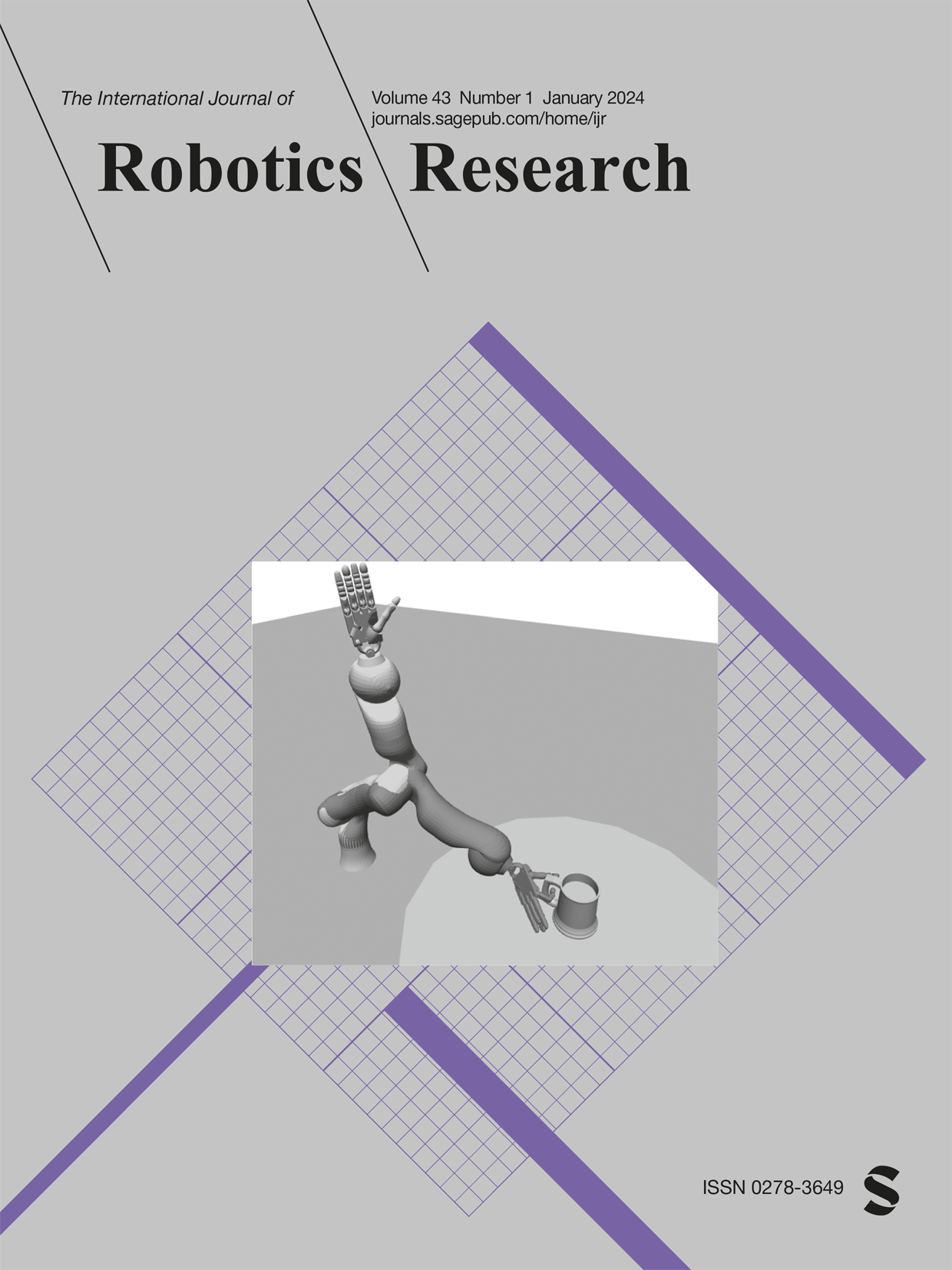Motion planning by learning the solution manifold in trajectory optimization
IF 7.5
1区 计算机科学
Q1 ROBOTICS
引用次数: 10
Abstract
The objective function used in trajectory optimization is often non-convex and can have an infinite set of local optima. In such cases, there are diverse solutions to perform a given task. Although there are a few methods to find multiple solutions for motion planning, they are limited to generating a finite set of solutions. To address this issue, we present an optimization method that learns an infinite set of solutions in trajectory optimization. In our framework, diverse solutions are obtained by learning latent representations of solutions. Our approach can be interpreted as training a deep generative model of collision-free trajectories for motion planning. The experimental results indicate that the trained model represents an infinite set of homotopic solutions for motion planning problems.学习轨迹优化解流形的运动规划
轨迹优化中使用的目标函数通常是非凸的,并且可以具有无限组局部最优解。在这种情况下,有不同的解决方案来执行给定的任务。尽管有几种方法可以找到运动规划的多个解,但它们仅限于生成有限的解集。为了解决这个问题,我们提出了一种在轨迹优化中学习无限组解的优化方法。在我们的框架中,通过学习解的潜在表示来获得不同的解。我们的方法可以被解释为训练用于运动规划的无碰撞轨迹的深度生成模型。实验结果表明,训练后的模型代表了运动规划问题的一组无穷多的同位解。
本文章由计算机程序翻译,如有差异,请以英文原文为准。
求助全文
约1分钟内获得全文
求助全文
来源期刊
CiteScore
22.20
自引率
0.00%
发文量
34
审稿时长
6-12 weeks
期刊介绍:
The International Journal of Robotics Research (IJRR) has been a leading peer-reviewed publication in the field for over two decades. It holds the distinction of being the first scholarly journal dedicated to robotics research.
IJRR presents cutting-edge and thought-provoking original research papers, articles, and reviews that delve into groundbreaking trends, technical advancements, and theoretical developments in robotics. Renowned scholars and practitioners contribute to its content, offering their expertise and insights. This journal covers a wide range of topics, going beyond narrow technical advancements to encompass various aspects of robotics.
The primary aim of IJRR is to publish work that has lasting value for the scientific and technological advancement of the field. Only original, robust, and practical research that can serve as a foundation for further progress is considered for publication. The focus is on producing content that will remain valuable and relevant over time.
In summary, IJRR stands as a prestigious publication that drives innovation and knowledge in robotics research.

 求助内容:
求助内容: 应助结果提醒方式:
应助结果提醒方式:


